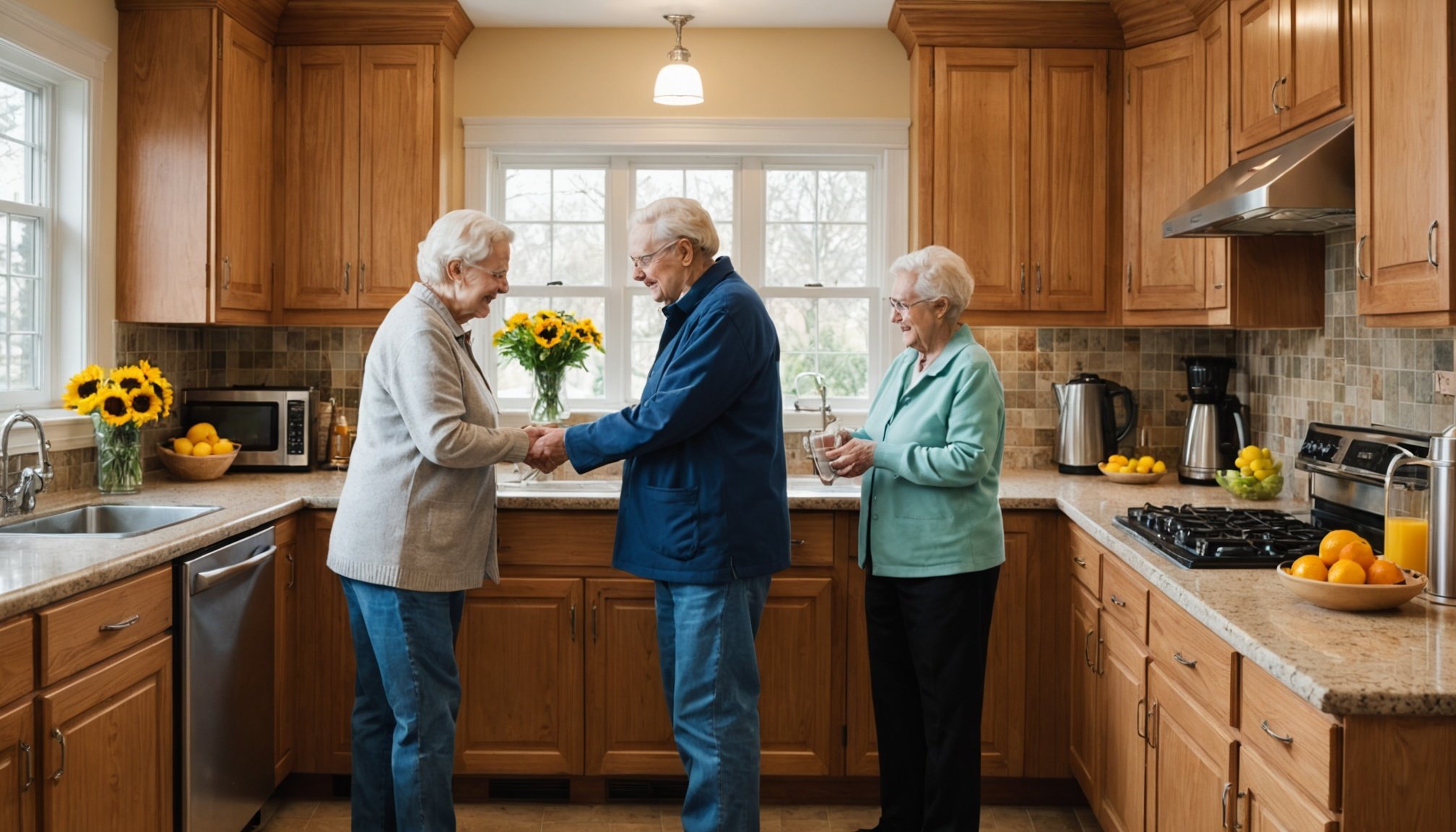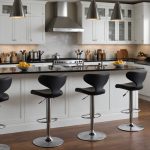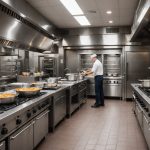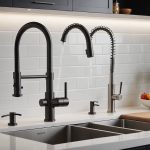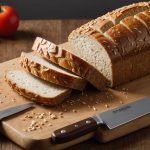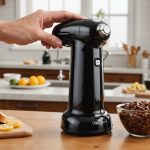Kitchens pose unique dangers for seniors, making safety design essential. These spaces must cater to their specific needs, reducing risks while promoting independence. Innovative solutions, from smart appliances to ergonomic layouts, can transform kitchens into safe havens. This approach not only safeguards our elderly loved ones but also enhances their daily experiences. Explore the creative strategies that can empower seniors to navigate their kitchens confidently, ensuring their well-being and comfort.
Understanding the Risks in Kitchen Environments for Seniors
Kitchen safety for seniors is paramount due to the unique challenges and hazards present in these environments. Common kitchen hazards include slippery floors, sharp objects, and hot surfaces, all of which can pose significant risks. For seniors, these dangers are exacerbated by potential mobility issues, making fall prevention a critical concern.
In parallel : Creating an Allergen-Free Kitchen: Innovative Design Tips for a Healthier Home
A study by the National Safety Council highlights that falls are the leading cause of injury among older adults, with kitchens being a primary location for such incidents. This underlines the importance of assessing individual needs and mobility limitations to mitigate risks effectively.
Common Kitchen Hazards
- Slippery floors: Often caused by spills or smooth surfaces.
- Sharp objects: Knives and other utensils can lead to cuts.
- Hot surfaces: Stovetops and ovens can cause burns.
Understanding these risks allows for tailored solutions, such as non-slip mats and easy-to-reach storage, enhancing kitchen safety for seniors. As one expert notes, "Adapting the kitchen to meet the needs of the elderly can significantly reduce the likelihood of accidents."
Additional reading : Designing a Low-Maintenance Kitchen: Tips for Effortless Cleaning and Care
By focusing on these kitchen hazards and implementing fall prevention strategies, we can create safer environments for seniors, allowing them to maintain independence and confidence in their daily activities.
Ergonomic Kitchen Design Principles
Creating a safe and accessible kitchen for seniors is essential for maintaining independence.
Key Ergonomic Principles
Ergonomic kitchen design focuses on creating a space that minimizes strain and maximizes efficiency. For seniors, this means considering accessible kitchen layout features that reduce the risk of injury. Counter height is crucial; ideally, counters should be at a level that allows easy access without bending or stretching.
Accessible Kitchen Layout
An accessible kitchen layout involves organizing the workspace to ensure that frequently used items are within easy reach. This reduces unnecessary movement and potential falls. Incorporating pull-out shelves and lazy Susans can enhance accessibility and convenience.
Senior-Friendly Features
Incorporating senior-friendly features into kitchen design can significantly improve safety. Consider the following suggestions:
- Adjustable counter heights: Tailored to individual needs.
- Non-slip flooring: Reduces the risk of falls.
- Lever-style handles: Easier to use than traditional knobs.
As one expert emphasizes, "Designing with seniors in mind ensures that the kitchen remains a functional and safe space." By prioritizing these ergonomic kitchen design principles, seniors can enjoy a more comfortable and secure cooking environment. This approach not only promotes safety but also encourages continued independence in daily activities.
Safety Features and Products for Senior Kitchens
Enhancing kitchen safety with the right tools and technology.
Recommended Safety Tools for Seniors
Incorporating kitchen safety products is crucial for creating a secure environment for seniors. Essential items include non-slip mats to prevent falls and grab bars for additional support. These tools are simple yet effective in reducing accident risks.
Assistive Technology Enhancements
Assistive devices play a pivotal role in enhancing kitchen safety. Products like automatic shut-off stoves and motion-sensor lights help mitigate hazards. These technologies offer peace of mind by addressing common safety concerns.
Product Reviews and Recommendations
Choosing the right senior kitchen tools can make all the difference. Consider these top recommendations:
- Non-slip mats: Provide traction on slippery surfaces.
- Grab bars: Offer stability and support.
- Ergonomic utensils: Designed for ease of use.
An expert notes, "Selecting the appropriate kitchen safety products can significantly enhance the safety and functionality of a senior's kitchen." By integrating these assistive devices and senior kitchen tools, seniors can enjoy a safer and more independent cooking experience. Prioritizing these features ensures that the kitchen remains a welcoming and secure space for all activities.
Innovative Design Ideas for Senior-Friendly Kitchens
Designing a safe cooking space for seniors involves creativity and functionality. Innovative solutions can transform kitchens into functional kitchen designs that prioritize safety while maintaining style.
Examples of Innovative Kitchen Designs
Exploring creative kitchen solutions can inspire practical changes. Incorporating features like pull-down shelves and adjustable countertops ensures that all items are within easy reach. A design that includes lever-style handles on cabinets and faucets can greatly enhance accessibility.
Case Studies of Successful Senior Kitchen Renovations
Real-life examples highlight the impact of thoughtful design. One notable renovation involved installing non-slip flooring and motion-activated lighting, significantly reducing fall risks. Another project featured a functional kitchen design with an open layout, allowing for easy movement and access to appliances.
Visual Aids Showcasing Effective Design Solutions
Visual aids play a crucial role in understanding design possibilities. Consider these elements:
- Pull-down shelves: Facilitate easy access to high storage.
- Adjustable countertops: Tailored to individual height needs.
- Motion-activated lighting: Enhances visibility and safety.
An expert emphasizes, "Incorporating creative kitchen solutions not only ensures safety but also enhances the overall cooking experience for seniors." By focusing on these safe cooking spaces, homeowners can create environments that support independence and comfort.
Testimonials and Insights from Caregivers and Seniors
Real-life experiences and valuable insights into senior kitchen safety.
Real-Life Testimonials
Seniors often share that kitchen safety improvements have significantly enhanced their daily lives. One senior remarked, "The addition of non-slip mats and grab bars has made my kitchen a much safer place." These changes not only reduce the risk of falls but also boost confidence in performing daily tasks independently.
Insights from Caregivers
Caregivers provide crucial insights into the challenges and solutions related to senior kitchen safety. A caregiver noted, "Ensuring accessible kitchen layout is essential. It minimizes unnecessary movements and potential accidents." By focusing on practical solutions, caregivers play a vital role in maintaining a safe environment for seniors.
Importance of Community Resources
Community resources and support networks are invaluable for seniors and caregivers. These networks offer guidance on implementing senior-friendly features and connecting with professionals who can assist in kitchen modifications. A community leader observed, "Access to community resources empowers seniors and caregivers to make informed decisions about kitchen safety."
- Senior kitchen experiences: Personal stories highlight the impact of safety improvements.
- Caregiver insights: Address challenges and propose practical solutions.
- Community support: Facilitates access to resources and expert advice.

